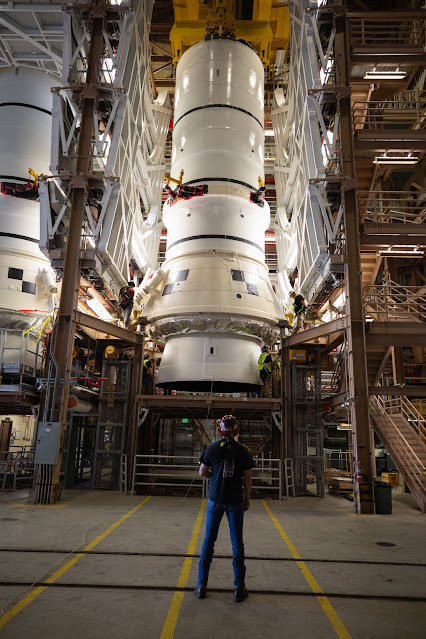Liftoff of SpaceX's Starship on Sixth Flight Test
Starship’s sixth flight test was on November 19, 2024. Congratulations to the SpaceX team on the successful ocean landing of Starship! The launch window opened at 4pm Central Standard Time (CST).
For 6th Flight Test updates and the full webcast, visit:
https://www.spacex.com/launches/mission/?missionId=starship-flight-6
In this 6th test flight, Starship’s upper stage flew the same suborbital trajectory as the previous flight test with splashdown targeted in the Indian Ocean. An additional objective for this flight was to attempt an in-space burn using a single Raptor engine, further demonstrating the capabilities required to conduct a ship deorbit burn prior to orbital missions.
Several thermal protection experiments and operational changes tested the limits of Starship’s capabilities and generated flight data to inform plans for ship catch and reuse. The flight test assessed new secondary thermal protection materials and had entire sections of heat shield tiles removed on either side of the ship in locations being studied for catch-enabling hardware on future vehicles. The ship also intentionally flew at a higher angle of attack in the final phase of descent, purposefully stressing the limits of flap control to gain data on future landing profiles. Finally, adjusting the flight’s launch window to the late afternoon at Starbase enabled the ship to reenter over the Indian Ocean in daylight, providing better conditions for visual observations.
Future ships, starting with the vehicle planned for the seventh flight test, will fly with significant upgrades including redesigned forward flaps, larger propellant tanks, and the latest generation tiles and secondary thermal protection layers as we continue to iterate towards a fully reusable heat shield. Learnings from this and subsequent flight tests will continue to make the entire Starship system more reliable as we close in on full and rapid reusability.
"Starship is essential to both SpaceX’s plans to deploy its next-generation Starship system as well as for NASA, which will use a lunar lander version of Starship for landing astronauts on the Moon during the Artemis III mission through the Human Landing System (HLS) program."
Key Starship Parameters:
Height: 121m/397ft
Diameter: 9m/29.5ft
Payload to LEO: 100 – 150t (fully reusable)
Download the Free Starship User Guide (PDF):
https://www.spacex.com/media/starship_users_guide_v1.pdf
Duration: 1 minute
Capture Date: Nov. 19, 2024
#NASA #SpaceX #Space #Earth #Mars #Moon #MoonToMars #ArtemisProgram #ArtemisIII #Starship #Spacecraft #Starship6 #TestFlight6 #HeavyBooster #SuperHeavyRocket #ElonMusk #Engineering #SpaceTechnology #HumanSpaceflight #CommercialSpace #SpaceExploration #Starbase #Mechazilla #BocaChica #Texas #UnitedStates #STEM #Education #HD #Video














.jpg)














